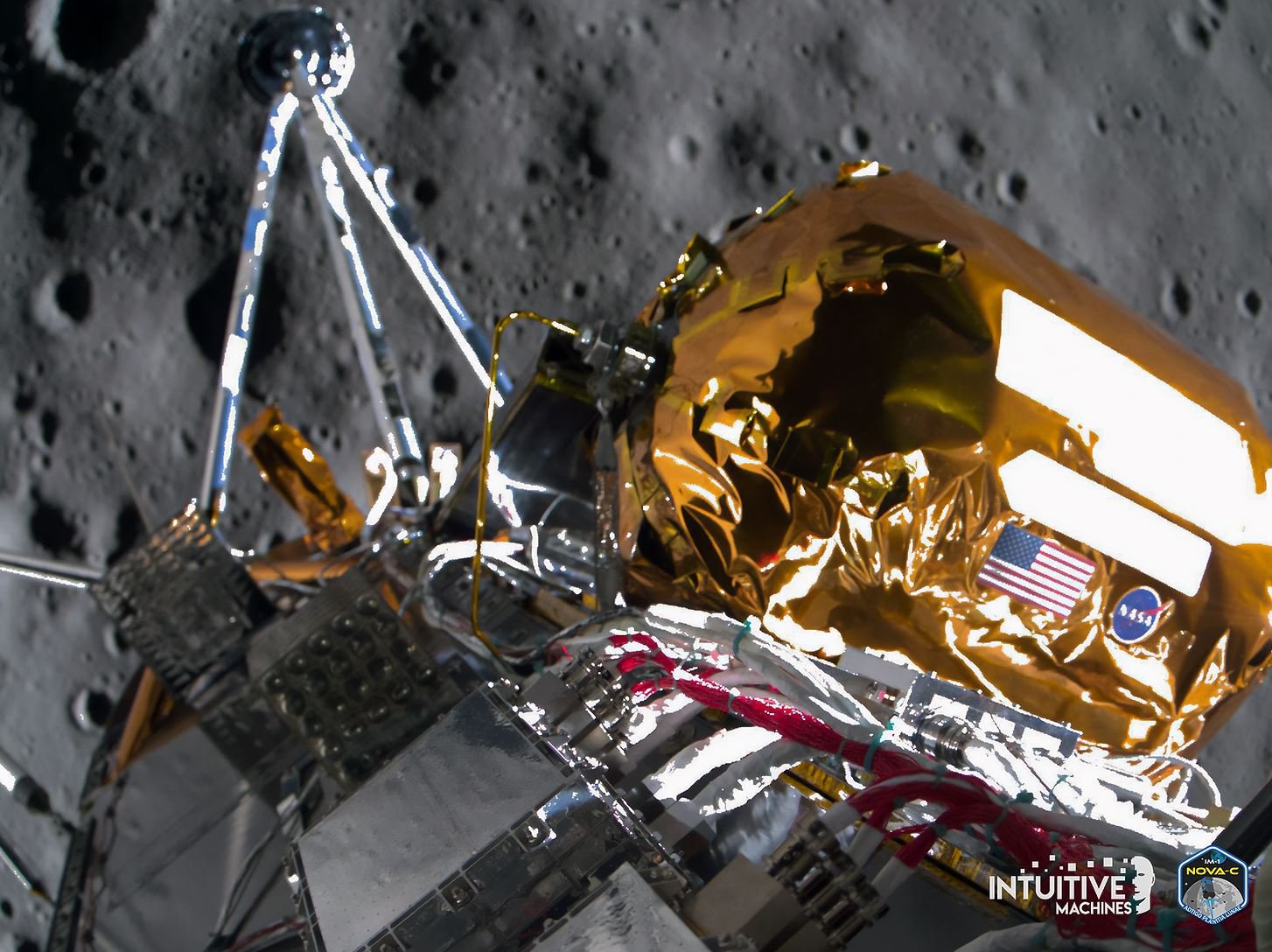On Thursday, Feb. 22, the spacecraft Odysseus touched down on the lunar surface. This marks the first time since 1972 that an American probe landed on the moon. Even though the landing was successful, the spacecraft landed unbalanced and tipped over. Fortunately, a nearby rock managed to prop the spacecraft at a 90-degree angle, allowing the spacecraft to perform its scientific experiments on the Moon.
Odysseus
Odysseus stands at a height of 13 feet; the spacecraft’s estimated cost was around 120 million dollars. The spacecraft was the result of a joint mission between Intuitive Machines, a private aerospace company, and NASA. The spacecraft’s design was built by Intuitive Machines, but it carries 6 NASA instruments for learning about the lunar environment for when people return sometime later this decade. The spacecraft was launched on February 15, hitching a ride on board SpaceX’s Falcon 9 rocket. After spending several days in space, Odysseus entered lunar orbit and slowly descended to the lunar surface. Although the spacecraft is slightly tipped over, the mission was congratulated as a success.
"You can say whatever you want to say," says Steve Altemus, the founder and chief executive of Intuitive Machines. "But from my perspective, this is an absolute success of a mission. Holy crap. The things that you go through to fly to the Moon. The learning, just every step of the way, is tremendous."
NASA’s administrator, Bill Nelson, also commented on the successful landing, stating that the feats that Intuitive Machines performed “demonstrates the promise of American leadership in space and the power of commercial partnerships under NASA’s CLPS initiative. Further, this success opens the door for new voyages under Artemis to send astronauts to the Moon, then onward to Mars.”
End of Mission
Even though the mission has been very successful, the spacecraft’s 90-degree landing has pointed Odysseus’s solar panels away from the Sun. This has resulted in the spacecraft losing a significant amount of power and energy. It is expected that its battery will run out on Feb. 29, and there is a possibility that in two weeks the spacecraft will be pointed towards the sun again and that it will wake up. However, NASA has described this as a slim possibility. But nevertheless, America is thrilled that we have returned to the Moon.
"The reason we made it is right here, our people," Altemus said after the landing. "The team we had, what they did, oh my God. They never quit. The perseverance, the resilience, just the power of the people we have in this team. That's why we're on the Moon."
Sources:
NASA. gov
ars-Technica

